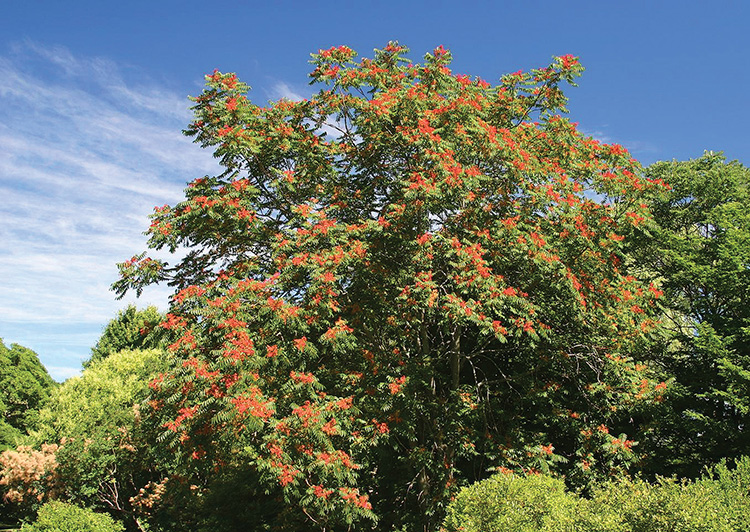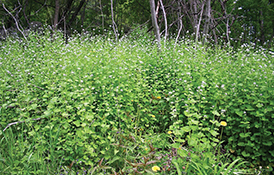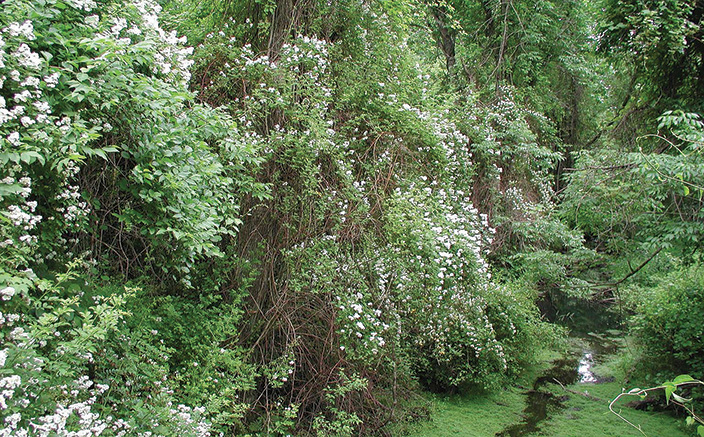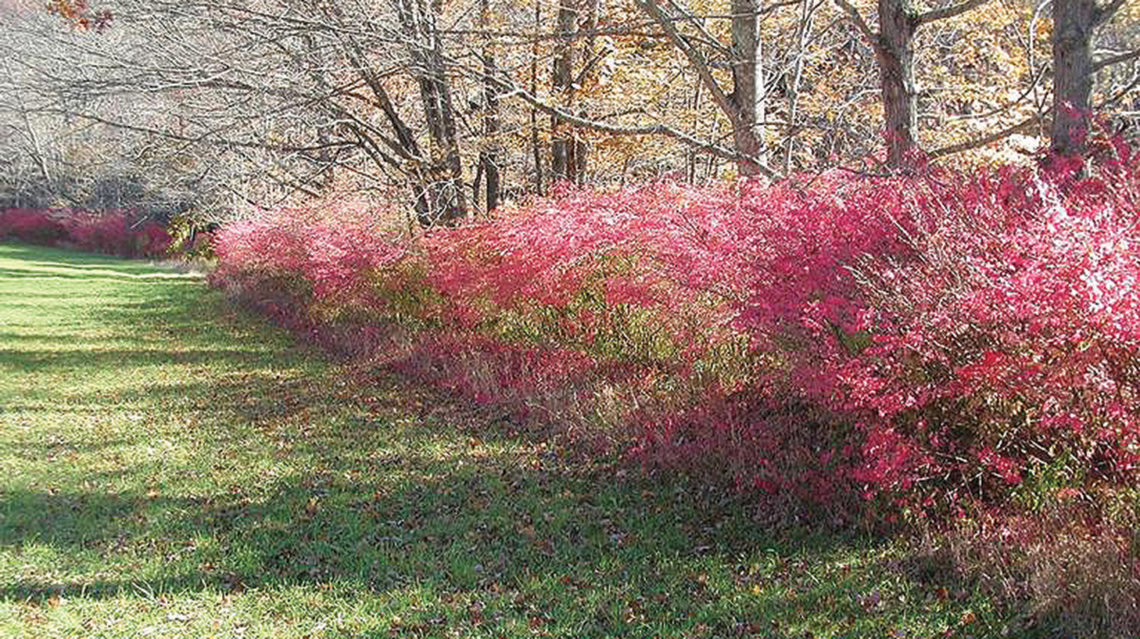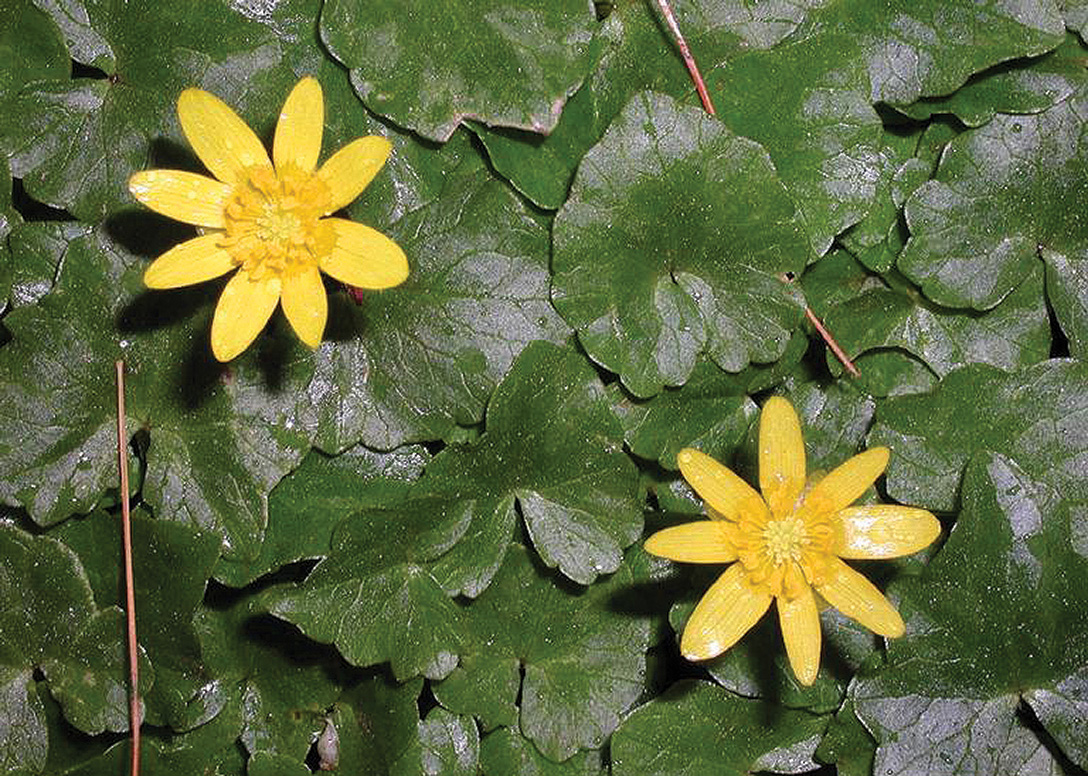SEPT-OCT 2017 – Tree of Heaven (Ailanthus altissima) is a consummate survivor that tolerates a wide range of climatic and soil conditions. A single tree can produce thousands of wind-born seeds, or samaras, that are released gradually over time. The tree can also reproduce asexually (vegetatively) via root sprouts. This is particularly helpful in low-light conditions where seedlings might not do so well. It may be the fastest growing tree in North America. Sprouts and suckers can grow 14 feet or more in the first season. Seedlings can grow 6 feet in their first year. Younger trees grow faster than old ones, allowing it to take quick advantage of disturbances…
-
-
Invasive Garlic Mustard
JULY-AUG 2017 – Garlic mustard was first reported in the U.S. on Long Island in 1868. It was probably brought here for culinary and medicinal purposes. Its native range includes Europe and parts of Asia and Africa. One of the reasons it’s been so successful here is that its natural enemies are non-existent. Garlic mustard (Alliaria petiolata) is considered invasive in Connecticut. It’s a cool-season biennial herb that starts growing before native plants break dormancy and dies back to brown stalks by mid-summer. It flowers from April to June. It reproduces via shiny black seeds that are held in slender green seed pods (siliques). It will self-fertilize if no pollinators…
-
Invasive Multiflora Rose
MAY-JUNE 2017 – Multiflora Rose (Rosa Multiflora) is a deciduous shrub that flowers from May to June and fruits in September and October. It can reach 15 feet in height and 10 feet in width. It forms dense thickets and can also climb like a vine. Unfortunately, clearing it out be a thorny proposition. It spreads by seed, suckering and branch tip layering. Wildlife help disperse the seed when they eat the hips, which it produces in great numbers. A large plant can produce 500,000 to a million seeds than can survive in the soil for up to 20 years. Wow. It often grows along streams and roads; and in…
-
Invasive Burning Bush
MARCH-APRIL 2017 – Burning Bush or Winged Euonymus (Euonymus alatus) is yet another good-looking deciduous shrub that can be invasive if given the chance. When you look out into the forests of Connecticut in the fall and see an understory of red-leaved shrubs, they’re probably either burning bush or Japanese barberry (Berberis thunbergii). Like Japanese barberry, burning bush is on the state’s invasive plant list but is not banned, presumably because there are some cultivars that are less aggressive. Both plants are popular and, since they’re not banned, you’ve probably seen them installed in urban landscapes, most often in hedges and mass plantings. Native to eastern Asia, burning bush has…
-
The Good, The Bad and the Pretty – Invasive Fig Buttercup
JULY-AUG 2016 – There’s been a lot of buzz lately about fig buttercup, also known as lesser celandine and a bunch of other names. It’s been on Connecticut’s Invasive Plant List since the beginning, but we’ve been hearing more about it over the past year or so. You can check out the official list at the website of the Connecticut Invasive Plant Working Group at cipwg.uconn.edu Its botanical name used to be Ranunculus ficaria and it had the same genus name as buttercups. However, its name was recently changed to Ficaria verna. Fig buttercup’s yellow flowers, which may be darker in the center, have 6 to 26 (usually 8) petals.…
